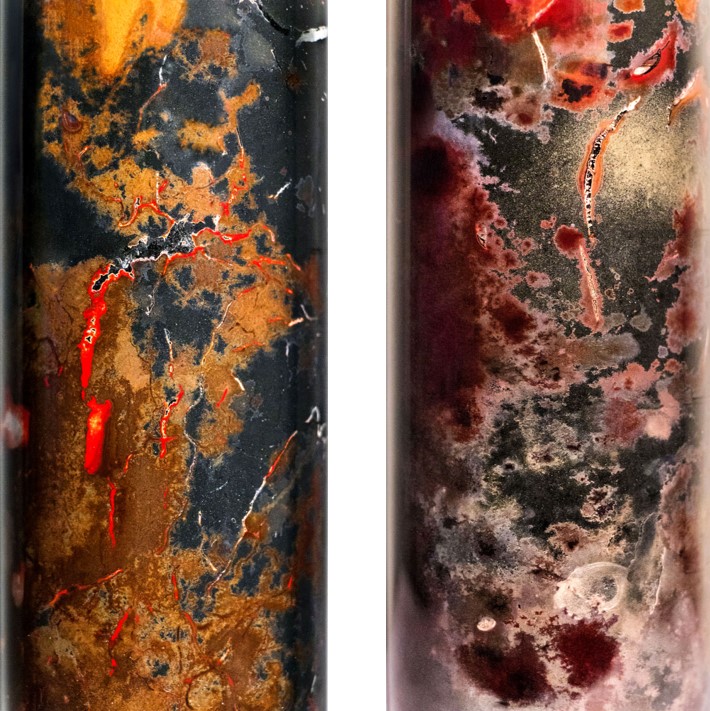Marine
Speculative Harbouring: Living Landscapes
March 11, 2020 by Marine Directorate Communications No Comments | Category Collaborations, Guest Blog, Marine Directorate general, Marine Directorate Science, Science, Technology, Engineering, Maths_STEM
As we celebrate British Science Week we’re delighted to bring you an update from Indian artist and researcher, Sonia Mehra Chawla, with whom we worked closely with during the research phase of her project.
Sonia’s installation, which focuses on issues around the North Sea, is presented as part of Edinburgh Science Festival 2020 and the Year of Coasts and Waters 2020 Partner Programme.
Below, Sonia has given us some excerpts from her working notes – where we see her begin to explore living systems and the phases of growth and decay. We hope you enjoy this insight into how creative thoughts and ideas begin to form and grow and how the juxtaposition between science and art becomes more apparent.
****************************************************************************
Constructing Living Vessels
“Back in the laboratory, we decided to construct devices for culturing a rich diversity of microorganisms, unique miniature microbial ecosystems or microbial gardens. The structure of a microbial community is the result of environmental factors, evolutionary processes, and neutral or stochastic processes. Once prepared, the column is a self-sustaining, enclosed ecosystem dependent only on input of light as an exogenous energy source.
The column provides a whole range of environments in one small setting, a microcosm enabling many types of organisms with different requirements to grow in different sections of the column.
Over time and space, microbial activity and abiotic processes result in chemical and environmental gradients from top to bottom and surface to interior of the columns, resulting in diverse niches for microbial growth.
The prepared columns were observed over several months for development of layers, smell, colours, and zones. As the microbes in the soil photo-synthesize pigments, we are exposed to the processes of growth and decomposition of various species of bacteria within this ecosystem, with variations in populations observed through waves of colour.
Incubating the column in available light for several months results in an aerobic/anaerobic gradient as well as a sulfide gradient. These two gradients promote the growth of different microorganisms such as: Clostridium, Desulfovibrio, Chlorobium, Chromatium, Rhodomicrobium, and Beggiatoa, as well as many other species of bacteria, cyanobacteria, and algae.”
Further Information:
- Previous blog post on Productive Crossings by Sonia Mehra Chawla
- Sonia Mehra Chawla’s Website
- ‘Entanglements of time & tide‘ is an interdisciplinary visual arts and science exhibition; the result of research facilitated by Edinburgh Printmakers and supported by Marine Scotland.
- This project involved artist residencies at: Edinburgh Printmakers, ASCUS Art & Science and our Marine Laboratory in Aberdeen.
Tags: ASCUS Art & Science, British Science Week, climate change, Edinburgh Science Festival, Edinburgh Science Festival 2020, Entanglements of time & tide, environment, research, science, Sonia Mehra Chawla, STEM, Year of Coasts and Waters, Year of Coasts and Waters 2020



Leave a comment